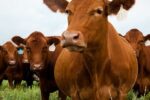CropLife Asia’s online forum draws Asian policymakers and global experts
A first-of-its-kind virtual conference on drone use for pesticide application in Asia concluded this week after three days of dialogue and discussion among stakeholders from across the food supply chain. The event focused on perspectives ranging from those of regional governments, manufacturers as well as commercial adopters, and experts in the field forecasting future innovations. “Our industry takes seriously its commitment to ensure responsible use of plant science technologies and sustainable agricultural practices. Drones are a new tool that can support and strengthen that effort – and have the potential to play a transformative role in Asian agriculture,” said Mr. Gustavo Palerosi-Carnerio, CropLife Asia President. “As with any innovation, the most critical components are the best practices that reflect responsible use and the policies that underpin them. Through this week’s conference, we’ve heard vital insights from agricultural drone use experts in these areas and what the future may hold. We look forward to continuing these constructive conversations, and working with regulators and other key stakeholders across the food supply chain to help deliver drone use for pesticide application in Asia that is conducted responsibly.” Drones or unmanned aerial vehicles (UAVs) are increasingly being used by large and small-scale farmers globally. This includes use for mapping, crop surveillance and scouting, pesticide application, and monitoring both irrigation as well as grazing livestock. According to a recent Industry ARC report, “Agricultural Drones Market – Forecast (2021-2026)”, the market for agricultural drones is projected to reach more than $5.8 billion by 2026. In Asia, the use of drones for pesticide application is rapidly growing in popularity due to the advantages it provides, namely: efficiency with use of inputs; enhanced spray precision; reduced water consumption; and less dependence on labor, resulting in lower associated costs. “As food and agricultural stakeholders, we all have a duty […]










